Vice President Dick Cheney, on a five-day trip through Switzerland and Italy, is stepping out of his self-imposed seclusion and into what administration officials and political analysts say is a calculated election-year makeover to temper his hard-line image at home and abroad.
Cheney, who usually shuns the media, has given a spate of radio and newspaper interviews in the last month. This European trip is only his second overseas in the last three years, the first being a visit to the Persian Gulf in early 2002 to build support for toppling Saddam Hussein. He invited eight journalists to join him aboard Air Force Two, a military version of a 757 jetliner.
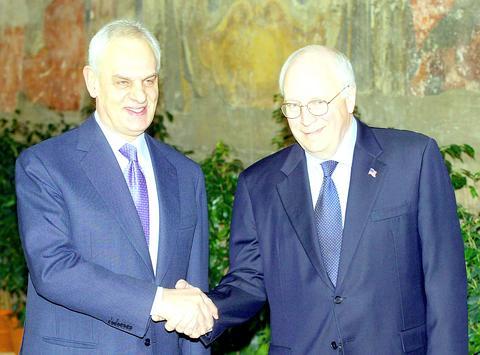
PHOTO: EPA
On Monday, he addressed a gathering of 200 Italian troops, political leaders, entrepreneurs and university students in Rome. He thanked top Italian officials, including Prime Minister Silvio Berlusconi, for their nation's contributions and sacrifices in Iraq and Afghanistan. And he paid homage at the American military cemetery here to the soldiers killed during the Allied landing in World War II at nearby Anzio 60 years ago this week. Yesterday, he was due to meet with Pope John Paul II at the Vatican.
Cheney's advisers say that raising the vice president's public visibility and opening a public-relations offensive is aimed at mending fences with foreign critics of the Iraq war and countering Democrats' efforts at home to demonize Cheney as a symbol of the George W. Bush administration's close corporate connections and overreliance on dubious intelligence about Iraq's illicit weapons programs.
"This year's going to be a long slog, and it's imperative that we recount the accomplishments of the administration," said Mary Matalin, a longtime Cheney adviser. "This is something he can do quite well. He's particularly adept at putting events in a historical context."
Cheney has long been a favorite of conservatives, and in the 2000 campaign he also offered a reassuring presence on the ticket to many independents wary of Bush's inexperience. But with Bush having to rely less on Cheney's stature after the Sept. 11, 2001, terrorist attacks, there are signs the vice president is becoming a more divisive figure.
A New York Times poll this month found that Cheney's favorable ratings had declined to 20 percent of the voters surveyed compared with 39 percent in a similar poll in January 2002. His unfavorable ratings increased to 24 percent, from 11 percent, in the same period. Many voters in both surveys said they were undecided or did not know enough to have an opinion.
"He's clearly at a point in his vice presidency to do more harm than good, except among the most intense Republican partisans who look to him for reassurance," said Paul Light, a vice-presidential academic at New York University's Wagner Graduate School of Public Service. "Handling Dick Cheney is like handling nuclear material. It can be quite powerful, but it can be quite dangerous and has to be handled carefully."
Cheney was a major architect of the administration's march to war with Iraq, and critics now say he oversold the intelligence about Baghdad's illicit arms.
Democrats who have been critical of the contracting process for rebuilding Iraq have singled out the Halliburton in particular, in part because Cheney was chairman of the Texas-based energy company until 2000. Halliburton last week agreed to repay the government $6.3 million for apparent overcharges.
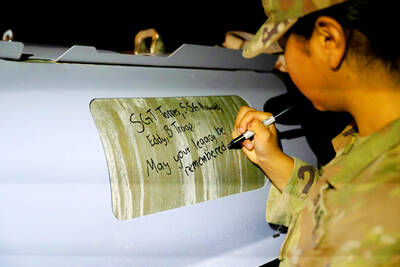
REVENGE: Trump said he had the support of the Syrian government for the strikes, which took place in response to an Islamic State attack on US soldiers last week The US launched large-scale airstrikes on more than 70 targets across Syria, the Pentagon said on Friday, fulfilling US President Donald Trump’s vow to strike back after the killing of two US soldiers. “This is not the beginning of a war — it is a declaration of vengeance,” US Secretary of Defense Pete Hegseth wrote on social media. “Today, we hunted and we killed our enemies. Lots of them. And we will continue.” The US Central Command said that fighter jets, attack helicopters and artillery targeted ISIS infrastructure and weapon sites. “All terrorists who are evil enough to attack Americans are hereby warned
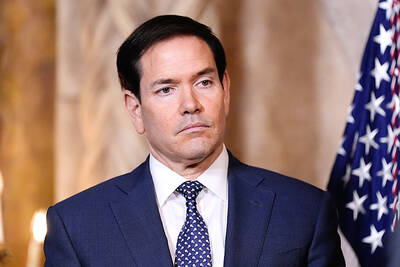
‘POLITICAL LOYALTY’: The move breaks with decades of precedent among US administrations, which have tended to leave career ambassadors in their posts US President Donald Trump’s administration has ordered dozens of US ambassadors to step down, people familiar with the matter said, a precedent-breaking recall that would leave embassies abroad without US Senate-confirmed leadership. The envoys, career diplomats who were almost all named to their jobs under former US president Joe Biden, were told over the phone in the past few days they needed to depart in the next few weeks, the people said. They would not be fired, but finding new roles would be a challenge given that many are far along in their careers and opportunities for senior diplomats can
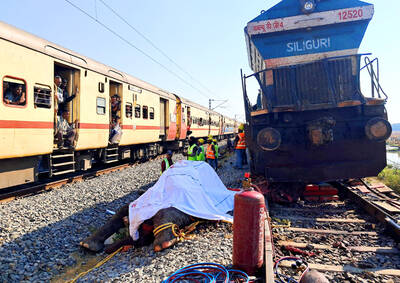
Seven wild Asiatic elephants were killed and a calf was injured when a high-speed passenger train collided with a herd crossing the tracks in India’s northeastern state of Assam early yesterday, local authorities said. The train driver spotted the herd of about 100 elephants and used the emergency brakes, but the train still hit some of the animals, Indian Railways spokesman Kapinjal Kishore Sharma told reporters. Five train coaches and the engine derailed following the impact, but there were no human casualties, Sharma said. Veterinarians carried out autopsies on the dead elephants, which were to be buried later in the day. The accident site
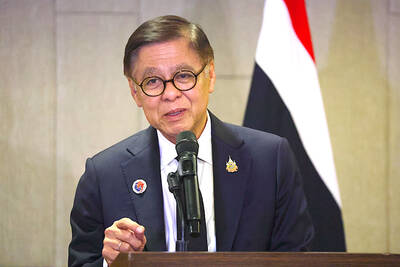
RUSHED: The US pushed for the October deal to be ready for a ceremony with Trump, but sometimes it takes time to create an agreement that can hold, a Thai official said Defense officials from Thailand and Cambodia are to meet tomorrow to discuss the possibility of resuming a ceasefire between the two countries, Thailand’s top diplomat said yesterday, as border fighting entered a third week. A ceasefire agreement in October was rushed to ensure it could be witnessed by US President Donald Trump and lacked sufficient details to ensure the deal to end the armed conflict would hold, Thai Minister of Foreign Affairs Sihasak Phuangketkeow said after an ASEAN foreign ministers’ meeting in Kuala Lumpur. The two countries agreed to hold talks using their General Border Committee, an established bilateral mechanism, with Thailand